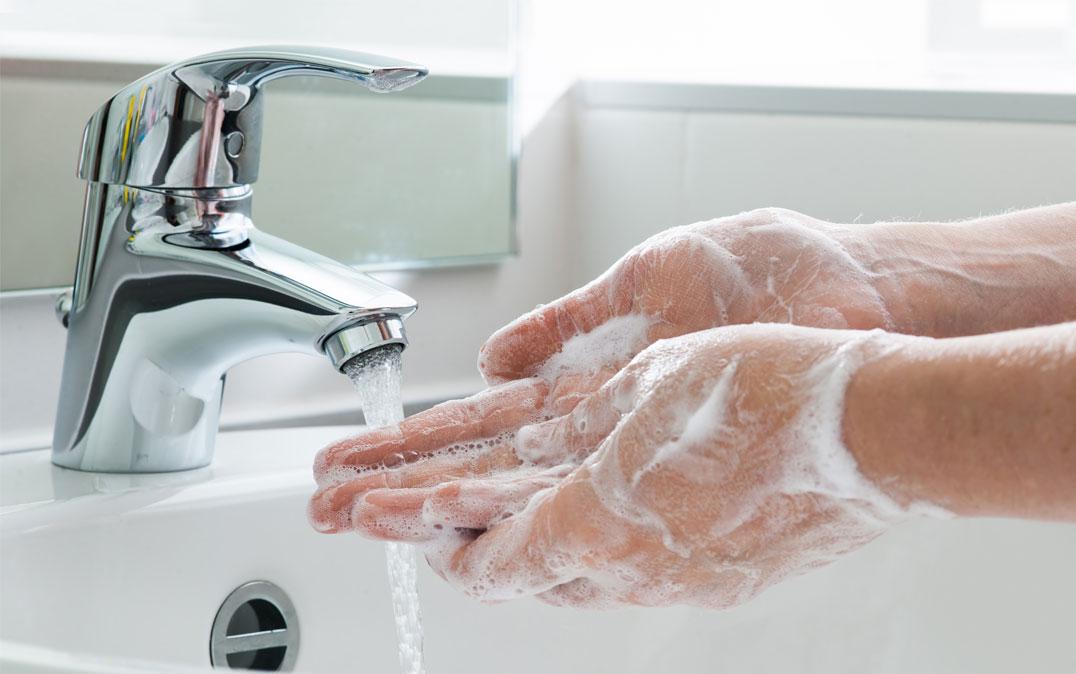Research News
Dangerous Hitchhikers: Visualizing How We Spread Coronavirus within Our Homes
 Image by Alexander Raths/Shutterstock
Image by Alexander Raths/Shutterstock
Scientists show, using simulations, how viral loads are easily transmitted from our hands to household objects, highlighting the importance of hygiene
While COVID-19 can be transmitted via contact with contaminated objects, most studies have focused on airborne droplet transmission. Against this backdrop, scientists from Japan conducted detailed computational simulations based on real-life behavioral data to visualize how viruses spread to common household items shortly after people return home. Their results illustrate the importance of immediate hand sanitization upon returning to avoid contact infection, reinforcing the effectiveness of a good hygiene.
It has been over three years since the outbreak of the COVID-19 pandemic worldwide, and we are yet to find an effective cure for the disease. Moreover, new variants of the SARS-CoV-2 virus, some with higher infectivity, are being discovered every year. Fortunately, compared to our situation in 2020, we know much more about SARS-CoV-2 and the ways in which it spreads from host to host. There are two main routes of transmission for the virus: droplet infection and contact infection. The first mode—droplet infection—involves inhaling virus-loaded droplets exhaled from a carrier during normal breathing or conversation. This kind of transmission can be prevented effectively using face masks and increased ventilation. In contrast, contact infection occurs when viruses are transferred from contaminated objects, such as handrails, doorknobs, and commonplace items, to a person's hands and ultimately to the mucous membranes of the mouth, eyes, or other parts of the body.
Unfortunately, contact infection has received little attention from scientists so far. "Studies on COVID-19 transmission have mostly focused on droplet infection, without considering the risk of contact infection due to viruses on the body or belongings brought in from outside," explains Prof. Setsuya Kurahashi from the University of Tsukuba, Japan, "Studies on contact infection risk at home based on real survey data are few and this is a recognized issue in COVID-19 research."
Accordingly, to address this knowledge gap, a research team led by Professor Kurahashi recently conducted a study aimed at estimating the risk of contact transmission of COVID-19 for indoor environments. By combining real behavioral data, agent-based modeling, and computational simulations, the team shed important light on how viruses spread to various household objects from the residents' hands, and it can be mitigated. Their paper was published in Volume 10 of the journal Frontiers in Physics on January 12, 2023.
First, the team sent out over 1,100 surveys to gather information on what people do in the first 30 minutes after returning home. They analyzed these survey responses and extracted data on people's behavior, location, and objects touched during this time span. Next, they used these data to prepare probability tables describing the likelihood of room-to-room transfer and that of coming into contact with various commonplace items. Additionally, the team conducted laboratory experiments to quantify how well a viral load can be transferred from different materials to the skin and vice versa.
Based on this information, the team performed multiple kinds of simulations to analyze the viral spread patterns within a standard two-bedroom household. In one of these, they focused on how viruses are transferred between rooms and to objects shortly after a person carrying the virus on their hands returns home. In another, they analyzed what happens when a second person returns home slightly after the first person has already spread the virus indoors. Finally, they investigated how the virus spreads through the combined actions of an infected person recovering at home and a person returning home from outside carrying the virus.
The results of these simulations revealed that what we do after returning home largely determines how effectively the virus will spread around the household. It turned out that simply washing hands after arrival is not entirely effective, since one is likely to have already come into contact with various indoor objects, spreading the virus. Rather, disinfecting one's hands at the entrance itself proved better at preventing contact transmission.
These findings offer a much-needed insight on how SARS-CoV-2 and other viruses can spread in an indoor setting through contact with household items. "While the use of masks and safe distancing can prevent droplet transmission, the risk of contact transmission had not been properly quantified prior to our study, and general hand sanitization has been the only recommendation," highlights Prof. Kurahashi. "By accurately visualizing the number of viruses adhering to household objects, we have shown that hand disinfection at the right time and right place are extremely important as a tipping point," he concludes.
We certainly hope this insight will be translated to better prevention guidelines and soon!
###
This study was supported by JSPS KAKENHI Grant Number 21H01561 and Covid-19 AI & Simulation Project run by Mitsubishi Research Institute commissioned by Cabinet Secretariat. The authors declare that this study received contributions from Mitsubishi Research Institute, Inc.
Original Paper
- Title of original paper:
- A tipping point of spreading viruses: Estimating the risk of household contact transmission of COVID-19
- Journal:
- Frontiers in Physics
- DOI:
- 10.3389/fphy.2022.1044049
Correspondence
Professor KURAHASHI Setsuya
Faculty of Business Sciences, University of Tsukuba





